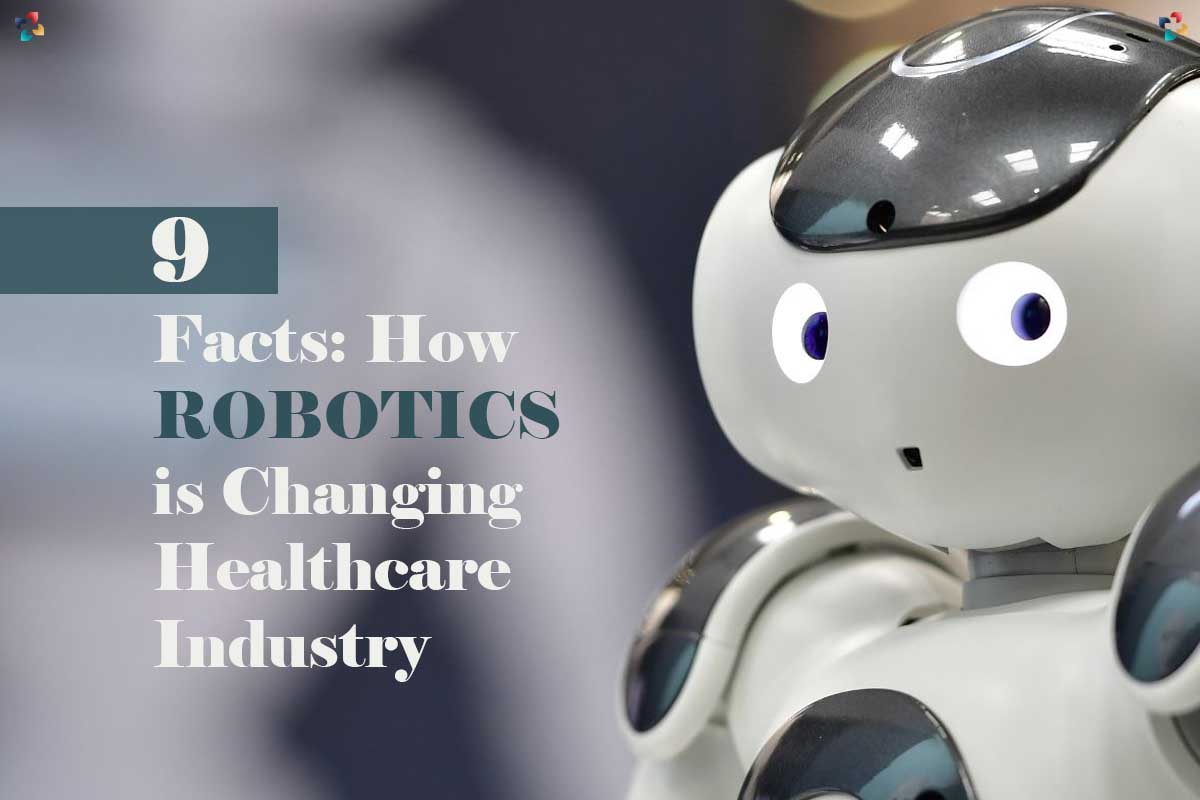Advanced technologies, such as AI-guided robots and automation, provide a possible solution to the provider crisis by relieving healthcare workers from repetitive and time-consuming duties and enabling clinicians to concentrate on tasks that need a specialized touch. There are many applications of Robotics Changing Healthcare Industry, from clerical work to surgical assistance to hospital cleaning.
There was also a decrease in the spread of the pandemic due to the adoption of robotic-assisted ultrasound devices, which allowed for more separation between patients and sonographers. The use of robots in healthcare has been commonplace for a long time, and this trend will only increase as robots continue to aid in improving the quality of life for patients.
Here are 9 facts about how Robotics Changing Healthcare Industry;
1. Telemedicine
As part of a globally Robotics Changing Healthcare Industry, robots have access to doctors from all around the globe. In the underdeveloped world, where emergency medical services sometimes arrive too late to save a patient’s life, this might have a profound effect. Service providers such as Health Tap, Babylon Health, and Teladoc make in-person medical consultations available to individuals in underserved regions through video calls.

2. Surgical Robots
These days, surgeons often use robots to assist them. Sophisticated operations may be performed by surgical robots with very tiny incisions and minimum scars. These Robotics Changing Healthcare Industry, machines have high-resolution 3-D cameras, mechanical arms, and a selection of additional hand-held devices.
3. Training
Doctors, nurses, and other medical personnel who use robots regularly must be well familiar with them to eliminate the possibility of human mistakes. This kind of instruction often requires a significant financial investment of time, and it also often requires a great deal of attention to detail. Surgeons and other medical professionals may need to be familiar with and adept at troubleshooting the technological challenges presented by robotics changing healthcare.
4. Nurse Robots
In Robotics Changing Healthcare Industry, you can’t find greater solace than in the arms of a big, friendly teddy bear. Developed in response to Japan’s rapidly expanding senior population, ROBEAR is a robot with a very specific purpose. The robot’s Smart Rubber touch and torque sensors allow it to engage with patients in a safe and comfortable way. It can safely lift and carry patients, and it can also serve as an arm for them to rest on when walking.
Fewer children mean fewer potential caretakers, which is seen as a global crisis. robotics changing healthcare, and more specifically nurse robots that can communicate with patients, are being looked at as potential answers. Improvements like ROBEAR’s lighter design and smaller base make its integration promising, even if testing is still ongoing.
5. Therapeutic Robots

Many medical facilities now use robots as a means of providing patients with the company. Although robots may seem emotionless, these tech firms may serve as a soothing companion, much like a cat or dog. Robotics changing healthcare these robots aim to make patients more at ease during medical procedures. Five different kinds of sensors are included in the software of these interactive robots, allowing them to recognize their environment and recall past interactions with humans.
6. Use of Nanobots
Clinical trials with nanorobots designed to cure leukemia are now underway. The Daily Mail stated in March that extremely sick Leukemia patients would be treated using nanorobots. Robotics Changing Healthcare Industry, small robots that can navigate the bloodstream has been tried and proven effective in animal trials. The study’s principal investigator believes that a cure will be found within a month.
Ido Bachelet plans to treat a patient who has been given six months to live by injecting DNA nanorobots into the patient in an effort to kill off Leukemia cells without damaging any good tissue. According to the Daily Mail, Bachelet predicted that based on the results of the tests, the patient will make a full recovery within a month.
7. Accurate Diagnostics
AI really comes into its own when it comes to making accurate diagnoses of human health concerns. Artificial intelligence can identify risk factors for a variety of diseases and disorders in a patient. It does this by examining the patient’s medical history and data to ascertain the patient’s present condition. So far, AI has shown itself capable of making correct diagnoses of illnesses 87% of the time in controlled environments.
Detection of health conditions by humans, on the other hand, was accurate 86% of the time. The speed and scale at which robots and AI can scan thousands of instances in search of connections between hundreds of factors lend credence to their precision.
In addition, IBM Watson, a healthcare technology, has reached a 99% accuracy rate in cancer diagnosis. Therefore, based on the figures provided, I believe that AI and robotics changing healthcare are capable of providing diagnoses on par with the best human medical professionals.
8. Exceptional Precision
The several robotic technologies now in use at the world’s best hospitals greatly increase the practicality of doing more complex jobs at a faster, more precise rate. Their primary functioning is bolstered by their concrete concentration and attentive robotics, which allows them to accomplish tasks with high accuracy. Artificial intelligence empowers these robots with the ability to learn as they work.
This demonstrates the indisputable value that robots provide to the healthcare industry. Assuming the robots’ software is properly developed, they can’t fail. However, human oversight is essential. Due to the fact that robots need regular servicing to function effectively, human interaction is now essential.
9. Remote Treatment
The Robotics Changing Healthcare Industry concept of distant medical care has been around for over ten years. Due to inadequate network capacity, the technology was temporarily shelved when it was first introduced. After the introduction of 4G and 5G networks, however, more research and development efforts were made. Although humans are still needed for certain aspects of remote therapy today, robots are already capable of doing many sophisticated procedures on their own.

The United States Department of Defense has recently financed research at Carnegie Mellon University and the University of Pittsburgh to develop a robotic trauma care system for treating troops. Robotics changing healthcare, the bot pill a device that allows for a painless endoscopy, is yet another amazing technical achievement. Pictures are taken while the bot passes through your digestive tract, and its elimination is usually a natural process.
BOTTOM LINE
The healthcare industry is evolving and the increasing influence of automation and robotics in the sector is a testament to this change. From increased speed to better efficiency, the use of robotics is driving the industry through the transition from physical to digital. We hope you enjoyed reading these 9 facts that show how Robotics Changing Healthcare Industry.







